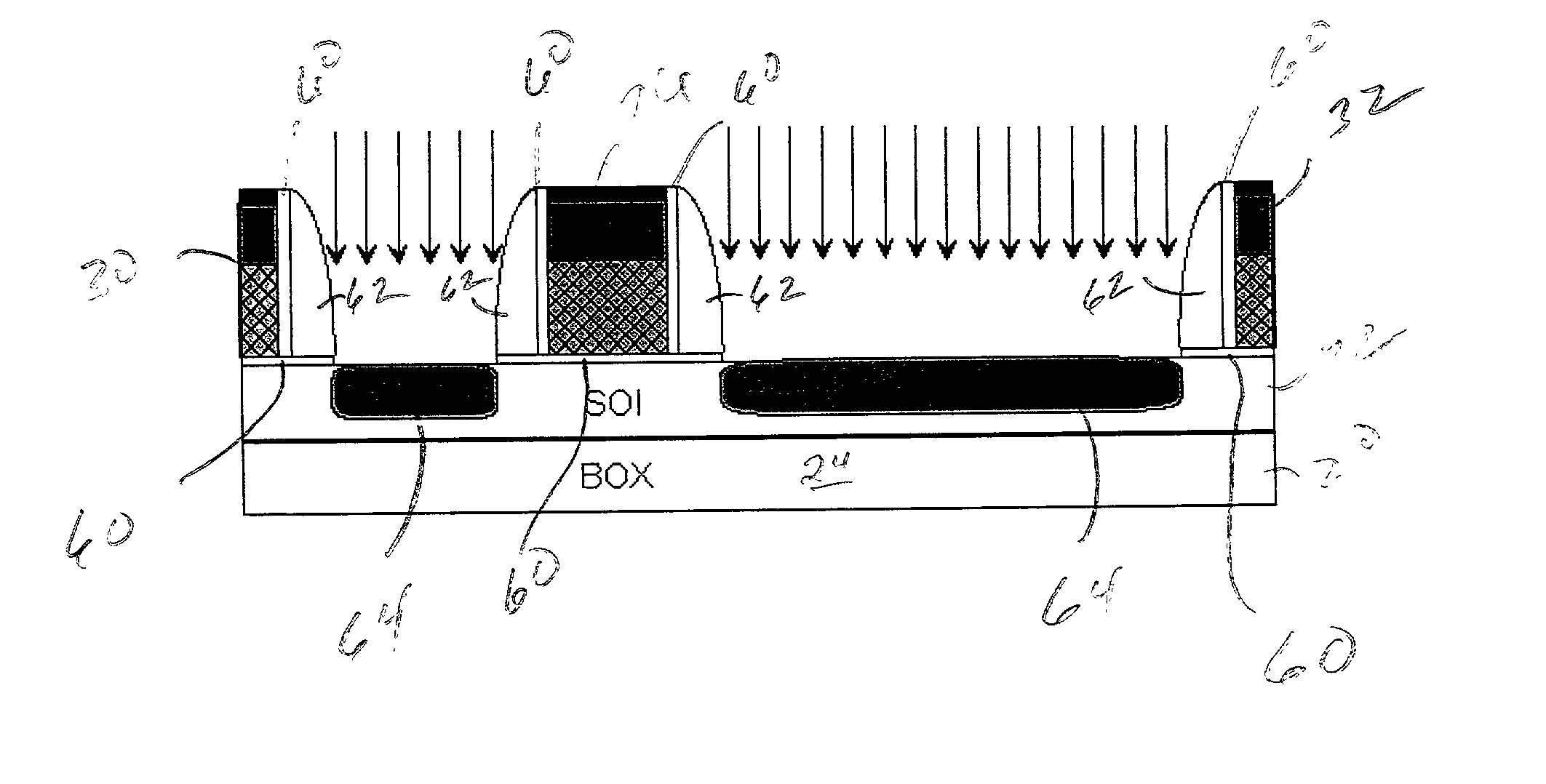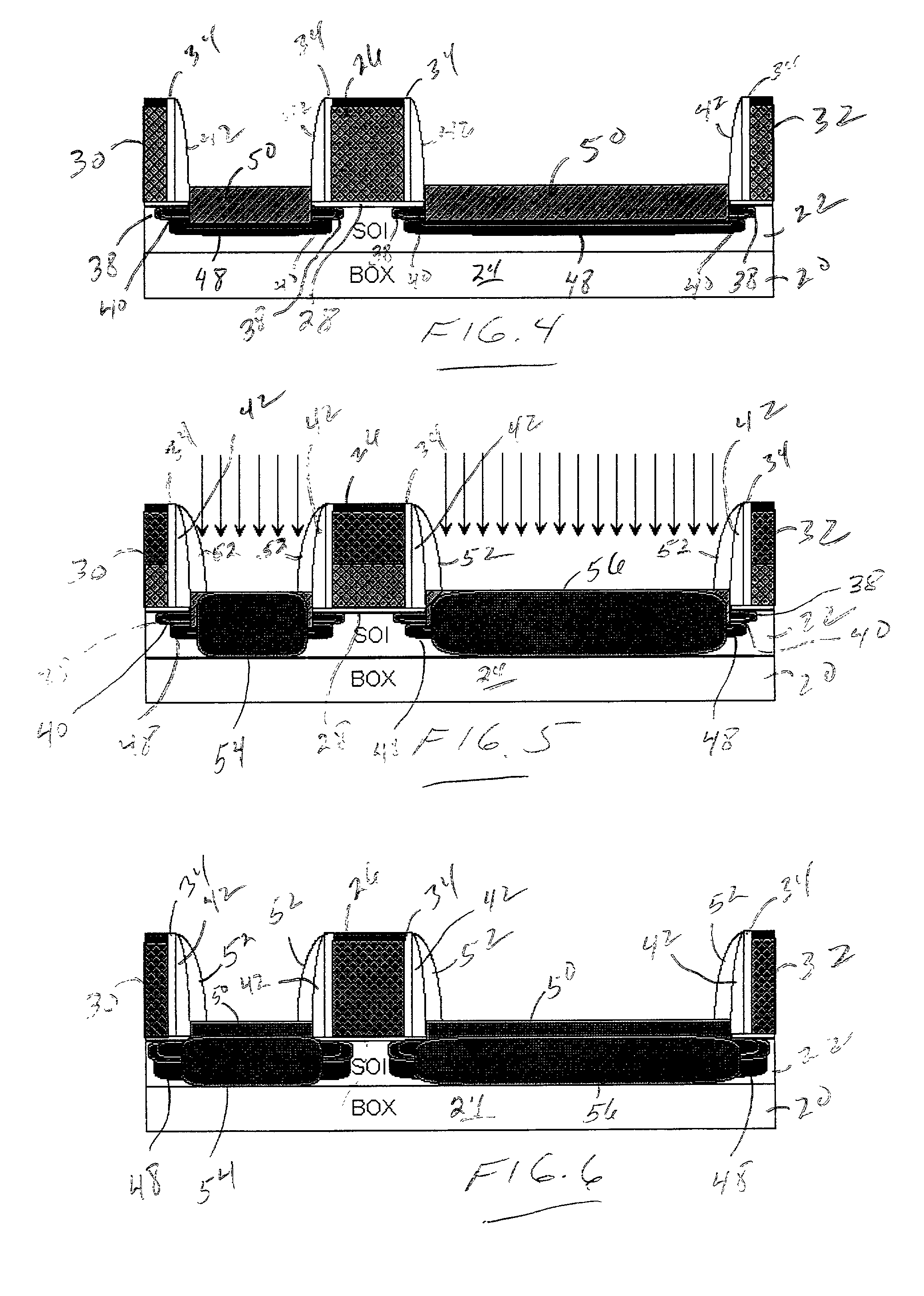Process for fabricating an MOS device having highly-localized halo regions
a technology of mos and halo region, which is applied in the direction of semiconductor devices, electrical devices, transistors, etc., can solve the problems of reducing the drive current of the transistor, attempting to solve the problem by simply increasing the lateral dimensions of the extension region, and preventing the device from failing, so as to achieve stable threshold voltage, extensive diffusion of dopants, and high doping concentration
- Summary
- Abstract
- Description
- Claims
- Application Information
AI Technical Summary
Benefits of technology
Problems solved by technology
Method used
Image
Examples
Embodiment Construction
[0042] A series of Monte Carlo simulation studies were carried out to illustrate the lateral spread of boron implanted into a silicon substrate. FIG. 12 illustrates the results of the Monte Carlo simulation for ion implantation of boron at a dose of 5.times.10.sup.13 cm.sup.-2 at 10 keV into a silicon substrate. The Monte Carlo simulations were carried out using a process simulator UT-MARLOWE (Rel. April, 1999). The simulation shows that the lateral gradient of boron is more than 250 angstroms per decade. After the application of activation annealing, the gradient of the boron halo profile increases more due to transient enhanced diffusion. The lateral spread of the boron halo profile shown in FIG. 12 contributes to short channel effects, such as threshold voltage rolloff, as the gate length is reduced.
[0043] The results of a second Monte Carlo simulation are shown in FIG. 13. FIG. 13 shows the results for a boron implantation in the silicon at an energy of 1keV in a dose of 5E13 io...
PUM
| Property | Measurement | Unit |
|---|---|---|
| energy | aaaaa | aaaaa |
| energy | aaaaa | aaaaa |
| gate length | aaaaa | aaaaa |
Abstract
Description
Claims
Application Information
 Login to View More
Login to View More - R&D
- Intellectual Property
- Life Sciences
- Materials
- Tech Scout
- Unparalleled Data Quality
- Higher Quality Content
- 60% Fewer Hallucinations
Browse by: Latest US Patents, China's latest patents, Technical Efficacy Thesaurus, Application Domain, Technology Topic, Popular Technical Reports.
© 2025 PatSnap. All rights reserved.Legal|Privacy policy|Modern Slavery Act Transparency Statement|Sitemap|About US| Contact US: help@patsnap.com



